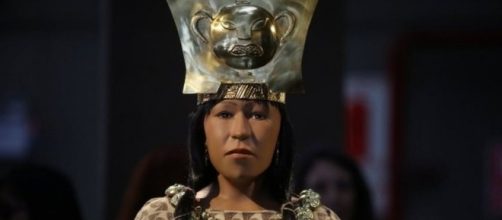Scientists in Peru have announced that they have used 3D Printing to reconstruct the face of the preserved remains of a woman who lived around 1,700 years ago. The women whose face was reconstrued is known as the 'Lady of Cao', who was a leader of the ancient Moche people.
Who is 'The Lady of Cao' and how was she found?
The preserved remains of the 'Lady of Cao' were discovered back in 2006 inside a derelict mud-brick pyramid that is called Huaca Cao Viejo. This site is part of the El Brujo Archaeological Complex, located in the La Libertad Region.
It is close to the city of Trujillo, the second most populous in Peru. Huaca Cao Viejo was built by the Moche people anywhere from between 1 AD to 600 AD and is well known for its stunning mural paintings and polychrome reliefs.
It was at this site that the 'Lady of Cao' was discovered by a Peruvian archaeological team. Her remains are the earliest known evidence of a female leader in what is now modern-day Peru. Her remains were found buried with a crown, various gold and copper objects and a collection of weapons. These included two giant war clubs and 23 spear-throwers. Archaeologists believe this woman was either a high-ranking priestess or ruler due to the wealth of her burial. She was also heavily tattooed on her face, legs, and feet with magical symbols representing spiders and snakes.
A reconstruction and autopsy
A modern day autopsy was done on the remains of the 'Lady of Cao', which had been heavily wrapped in layers of cloth, to determine how old she was and how she died. She was in her mid-20s when she died, with the apparent cause being from complications during childbirth. It is believed that she died around 450 AD.
The reconstruction was done using 3D printing, along with forensics that was based on studying her remains, skull structure and doing ethnographic research. In total, the process took about 10 months and revealed a woman with an oval face and high cheekbones, something that many Peruvians today have.
What do we know about the Moche people?
The Moche civilization was a culture located in Northern Peru that lasted from the 1st century AD until the 8th century AD, with its capital being located near the present day city of Moche.
They had an extensive system of irrigation canals and agriculture to support many urban centers throughout the Moche river valley. They were also created sophisticated craft goods, especially mold-made pottery, and were also skilled metalworkers and artists.
Many scholars believe that their civilization was not politically organized into a state. Instead, each group of towns was organized under their own leadership of royalty and priests that all shared a common culture. It is unknown what caused the demised of the Moche but it is believed to have likely been environmental. Speculation ranges from earthquakes to catastrophic flooding from an El Nino or even the intrusion of sand dunes on population areas.


